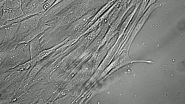(Press-News.org) CHICAGO (December 5, 2014): Malnutrition is an important factor predicting long-term survival in older patients undergoing pancreaticoduodenectomy (PD) (commonly called the Whipple procedure) to treat benign tumors and cysts of the pancreas as well as pancreatitis, according to new study results published in the December issue of the Journal of the American College of Surgeons.
"A comprehensive geriatric assessment of elderly patients who are being evaluated for the Whipple procedure is essential," said lead study author Dominic Sanford, MD, MPHS, a general surgery resident at the Washington University School of Medicine, St. Louis. "Included in that assessment should be a thorough nutritional evaluation for both risk stratification and long-term prognosis as well as to determine who needs close long term nutritional follow up."
As the population of people 65 and older continues to grow, so does the detection of nonmalignant pancreatic diseases. Left untreated, cysts and tumors in the pancreas can progress to invasive cancer. Today, about 30 percent of Whipple procedures are performed on geriatric patients with benign pancreatic diseases. In this procedure, a surgeon removes a portion of the pancreas, the gall bladder and the bile duct, and most of the duodenum. The small intestine is then reattached to the pancreas, the bile duct and the stomach, recreating the digestive system.
The aim of this study was to look at the effect of the Whipple procedure on long term survival. Dr. Sanford and colleagues sought to examine the effect of malnutrition on geriatric patients (over age 65) as compared with younger patients (under age 65). To perform this analysis, the researchers analyzed clinical data on 305 patients who underwent the Whipple procedure for benign pancreatic disease at Barnes Jewish Hospital, St. Louis, between 1995 and 2013. They applied the American College of Surgeons National Surgical Quality Improvement Program (ACS NSQIP®)/American Geriatric Society Guidelines criteria for preoperative severe nutritional risk (SNR) to those patients.
Next, the researchers categorized the patients into two groups: geriatric and non-geriatric. Patients were also classified as having SNR or not having SNR. They then compared survival of geriatric and non-geriatric patients with and without SNR.
The study analysis revealed that SNR was an independent predictor of long-term survival. Geriatric patients with preoperative SNR had significantly decreased long-term survival following PD for benign disease, with about one in three patients dead at five years, compared with one in 14 patients without SNR.
Importantly, the study authors point out how well patients without SNR did following pancreatic surgery. The average age of these patients was 73 years at the time of their operation, and they had a seven-year survival of 84 percent.
Additionally, there were no significant differences among the younger patients with and without SNR. The study authors note that these results suggest the effect of SNR on long-term survival differs between older and younger patients.
"Elderly people are not just older young adults. Malnutrition affects older people who are undergoing the Whipple procedure very differently than younger patients," Dr. Sanford said. "There is a lack of nutritional reserve in elderly patients that younger adults have; hence, elderly patients can't compensate for being malnourished when undergoing this procedure."
This study also showed that the proportion of older patients undergoing PD is rising. Over the course of the study, the proportion of geriatric patients who underwent PD for benign pancreatic diseases increased 21 percent.
"With a growing elderly population, we have to be very careful about performing the Whipple procedure on those who don't have cancer," Dr. Sanford said. "There are going to be some patients who undergo a Whipple procedure for presumed malignancy, whose pathology is ultimately determined to be benign postoperatively. These patients need to have very close long-term nutritional follow-up as a way to keep them on course and prevent them from falling off the survival curve."
Prior to this study, the long-term survival of patients undergoing PD for benign pancreatic diseases had not been well studied. The study authors conclude that this research supports the ACS NSQIP/American Geriatric Society Best Practice Guidelines' recommendation that a formal nutritional evaluation should be a routine part of the preoperative work up for geriatric patients being considered for PD. Additionally, nonoperative management should be strongly considered in geriatric patients with SNR and benign disease.
INFORMATION:
Other study participants include: Angela M. Sanford, MD; Ryan C. Fields, MD, FACS; William G. Hawkins, MD, FACS; Steven M. Strasberg, MD, FACS; and David Linehan, MD, FACS.
Citation: Journal of the American College of Surgeons, December 2014: Vol. 219 (6) 1149-1156.
This study was supported by the NCI grant T32 CA 009621.
About the American College of Surgeons (ACS)
The American College of Surgeons is a scientific and educational organization of surgeons that was founded in 1913 to raise the standards of surgical practice and improve the quality of care for surgical patients. The College is dedicated to the ethical and competent practice of surgery. Its achievements have significantly influenced the course of scientific surgery in America and have established it as an important advocate for all surgical patients. The College has more than 79,000 members and is the largest organization of surgeons in the world. For more information, visit: http://www.facs.org.
Super Typhoon Hagupit is forecast to make landfall in the eastern Philippines bringing heavy rainfall, damaging winds and storm surge. NASA/JAXA's TRMM satellite and the RapidScat instrument provided rainfall and wind data, while NASA-NOAA's Suomi NPP satellite provided a visible image of the storm. In the Philippines, Hagupit is known locally as "Typhoon Ruby."
The Tropical Rainfall Measuring Mission or TRMM satellite caught a good view of Super Typhoon Hagupit on December 4, 2014 at 1721 UTC (12:21 p.m. EST) when its sustained winds were estimated at over 145 knots ...
ABBOTT PARK, Ill., Dec. 4, 2014 - Even in food-abundant industrialized countries like the U.S., an alarming number of people, particularly seniors, are in a state of diseased-associated malnutrition . Because of the impact on patient health, disease-associated malnutrition imposes a significant economic burden on society of $157 billion per year, according to new research published in a supplemental issue of the Journal of Parenteral and Enteral Nutrition (JPEN) and supported by Abbott .
Researchers looked at malnutrition across eight specific diseases* and evaluated ...
(Salt Lake City) --How can people who are dependent on prescription opioids reduce their cravings? Learn to enjoy other aspects of their lives.
That's the key finding in a new study published in the Journal of Behavioral Medicine by Eric L. Garland, associate professor at the University of Utah College of Social Work. Garland and colleagues studied how an intervention program for chronic pain patients called Mindfulness-Oriented Recovery Enhancement (MORE) decreased patients' desire for prescription drugs.
The MORE intervention concentrates on helping people ...
As California finally experiences the arrival of a rain-bearing Pineapple Express this week, two climate scientists from the University of Minnesota and Woods Hole Oceanographic Institution have shown that the drought of 2012-2014 has been the worst in 1,200 years.
Daniel Griffin, an assistant professor in the Department of Geography, Environment and Society at the University of Minnesota, and Kevin Anchukaitis, an assistant scientist at Woods Hole Oceanographic Institution, asked the question, "How unusual is the ongoing California drought?" Watching the severity of ...
Genetic mutations may cause more cases of amyotrophic lateral sclerosis (ALS) than scientists previously had realized, according to researchers at Washington University School of Medicine in St. Louis and Cedars-Sinai Medical Center in Los Angeles. The scientists also showed that the number of mutated genes influences the age when the fatal paralyzing disorder first appears.
ALS, also known as Lou Gehrig's disease, destroys the nerve cells that control muscles, leading to loss of mobility, difficulty breathing and swallowing, and eventually paralysis and death. Understanding ...
The Institute for Quality and Efficiency in Health Care (IQWiG) investigated in a dossier assessment whether propranolol offers an added benefit in comparison with the appropriate comparator therapy in infants with proliferating infantile haemangioma (sometimes called "strawberry mark").
According to the findings, there is an indication of major added benefit of propranolol in some children, i.e. those with haemangioma with a risk of permanent scars or disfigurement. In contrast, an added benefit is not proven for children with life- or function-threatening haemangioma, ...
The vicious cycle of diabetes describes a scenario where people are becoming fatter, often with elevated levels of glucose, and at increased risk for women to develop gestational diabetes (GDM). Intrauterine exposure to GDM, itself, is a major risk factor for later obesity and diabetes, thus perpetuating this maternal-offspring cycle of disease.
Researchers from Lund University have published an overview of evidence across the past few decades in the journal Diabetes, Metabolic Syndrome and Obesity: Targets and Therapy. They emphasize the need to update diabetes prevention ...
It means cancer "in place" but a carcinoma "in situ" often does not want to keep its place. Standing between a cancer cell in situ and the surrounding tissue of fibroblasts and extracellular matrix is the basement membrane, a thin sheet of fibers that normally cradles the cells above it. The basement membrane is also the frontline physical barrier that keeps primary tumors from spreading into the matrix below. Perforating the basement membrane is a cancer cell's first move toward invasion, but how? Fibroblasts are most commonly found in connective tissue that synthesizes ...
In the human brain, the BBB is not the Better Business Bureau but the blood brain barrier and the BBB is serious business in human physiology. The human BBB separates circulating blood from the central nervous system, thus protecting the brain from many infections and toxins. But the BBB also blocks the passage of many potentially useful drugs to the brain and it has long stymied scientists who want to learn more about this vital tissue because of the lack of realistic non-human lab models. Even less is known about the BBB in children. There are significant structural and ...
VIDEO:
This 19-second time lapse video shows the first six hours of neuronal conversion of skin fibroblasts from a patient with Alzheimer's disease.
Click here for more information.
The search for a living laboratory model of human neurons in the grip of Alzheimer's disease (AD)--the so-called "Alzheimer's in a dish"--has a new candidate. In work presented at the ASCB/IFCB meeting in Philadelphia, Håkan Toresson and colleagues at Lund University in Sweden report success ...




